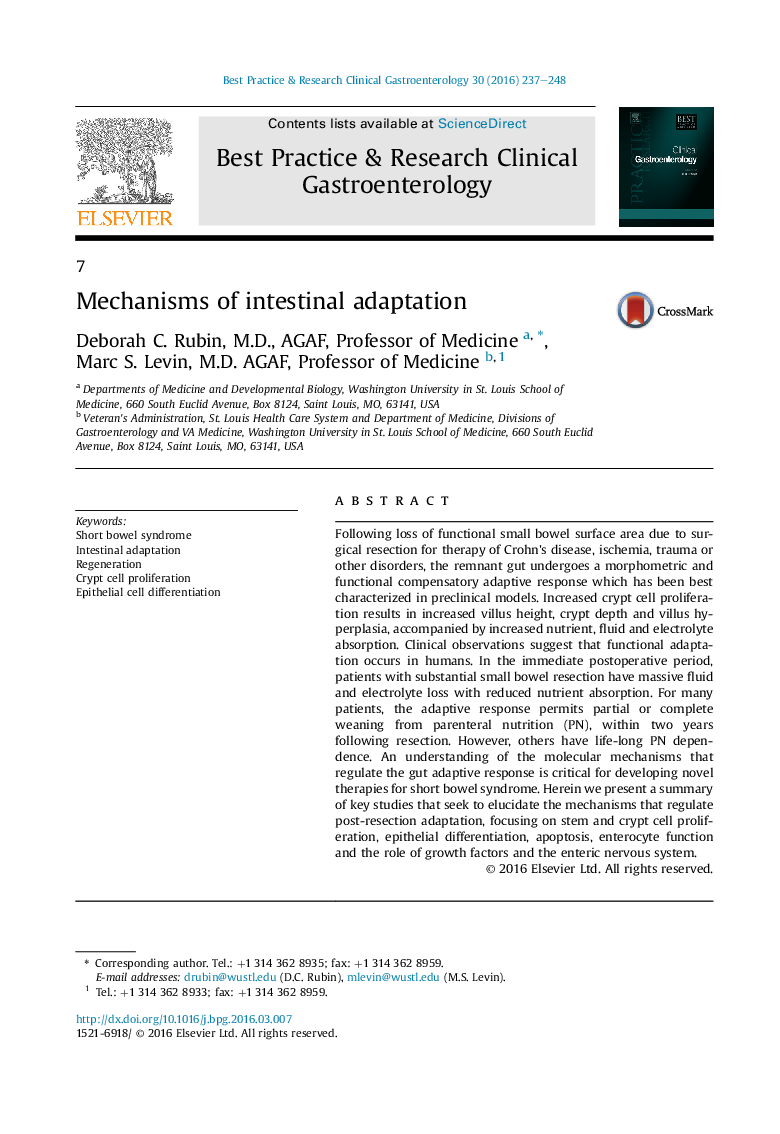| Article ID | Journal | Published Year | Pages | File Type |
|---|---|---|---|---|
| 3254126 | Best Practice & Research Clinical Gastroenterology | 2016 | 12 Pages |
Following loss of functional small bowel surface area due to surgical resection for therapy of Crohn's disease, ischemia, trauma or other disorders, the remnant gut undergoes a morphometric and functional compensatory adaptive response which has been best characterized in preclinical models. Increased crypt cell proliferation results in increased villus height, crypt depth and villus hyperplasia, accompanied by increased nutrient, fluid and electrolyte absorption. Clinical observations suggest that functional adaptation occurs in humans. In the immediate postoperative period, patients with substantial small bowel resection have massive fluid and electrolyte loss with reduced nutrient absorption. For many patients, the adaptive response permits partial or complete weaning from parenteral nutrition (PN), within two years following resection. However, others have life-long PN dependence. An understanding of the molecular mechanisms that regulate the gut adaptive response is critical for developing novel therapies for short bowel syndrome. Herein we present a summary of key studies that seek to elucidate the mechanisms that regulate post-resection adaptation, focusing on stem and crypt cell proliferation, epithelial differentiation, apoptosis, enterocyte function and the role of growth factors and the enteric nervous system.
